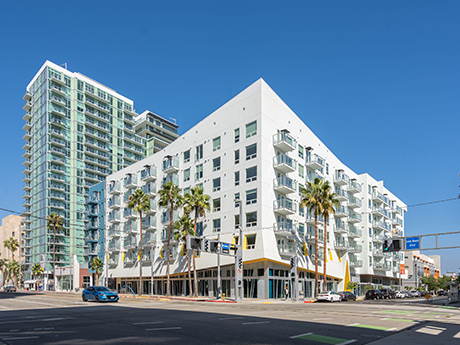— By Juan Huizar, President, Sage Real Estate —
Nationwide, multifamily sales are declining, while interest rates are rising. Buyers are adopting a patient approach, leading to properties lingering on the market for extended periods. This, of course, is accompanied by noticeable price reductions. Buyers are anticipating further price drops, while some sellers are slowly becoming more realistic in their pricing.
Long Beach has perennially attracted multifamily investors with more than 7,500 individual apartment buildings. This is mainly composed of older housing stock, which creates a fertile ground for investors and syndicators. Often regarded as the last affordable beach city, Long Beach — despite being overshadowed by other Southern California communities or grouped with Los Angeles — stands as a significant population and employment hub, ranking as the sixth-largest city in California.
Existing apartment sales for properties with five or more units have plummeted by more than 65 percent. Notably, 2021 was an exceptional year due to a confluence of factors, including rising real estate values and a low cost of capital. The current decline is more a reflection of increased capital costs than a trend over the past decade, with some properties selling for less than their 2019 prices.
There has been a substantial price reduction of at least 10 percent off the high. While peak prices in 2022 reached $340,000 per unit, the current market sees units trading at $300,000 per unit. Our firm recently put a 10-unit building into escrow with a price per door of $170,000. While this may be an anomaly, we do expect the price per unit to continue softening. Cap rates continue to rise, with the average market cap rate now at 4.9 percent. That’s up 50 to 75 basis points.
Asking rents in Long Beach are experiencing a slowdown, with one-bedroom units renting for $1,550 on average and two-bedroom units averaging $2,000 per month. Minimal improvement in rents is expected in the near term, and landlords may find it challenging to raise rents or make modest increases in the coming years. Units are also taking longer to rent. This is likely due to the price sensitivity caused by inflation.
Long Beach currently has 930 units under construction, constituting 1.5 percent of existing units in the city. This is primarily concentrated in the downtown area. Relaxed zoning changes at the city level have encouraged developers to invest in this region, aligning with the city’s plan to revitalize the downtown core, as outlined in the 2012 Downtown Plan. Over the past two years, 1,478 newly built units have been completed, with the most recent project being 432 units delivered by Onni Group in the East Village Art District this past February. Additionally, there are 3,108 proposed units that may enter the market in the coming years.
Another worry is adjustable loans that may pose a potential threat on the horizon. These loans may pressure owners to either refinance or sell. This anticipated influx of adjustable loans is expected to contribute to a continued softening of the market, compelling motivated sellers to adjust unit prices accordingly. While not all owners will be affected, those with short-term loans will be the hardest hit.
This makes it an excellent time to enter the market. Although interest rates are high, prices will drop to a point that investors can sustain the new capital cost.


